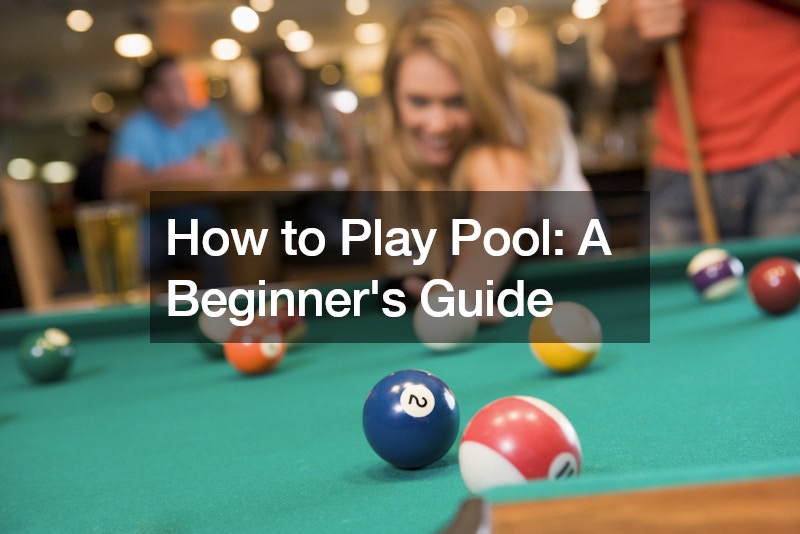If you’ve ever walked into a pool hall and felt intimidated by the seasoned players effortlessly sinking shots, fear not. Playing pool is a skill that anyone can learn with a bit of practice and understanding of the game’s fundamentals. Whether you’re looking to impress your friends at the local bar or considering investing in your own pool table for home entertainment, this beginner’s guide will help you get started on your pool-playing journey.
Understanding the Basics
Pool, also known as pocket billiards, is a cue sport played on a rectangular table with six pockets. The game typically involves 15 colored and numbered balls, along with one cue ball.
The objective is simple: use the cue stick to strike the cue ball and pocket the object balls into the table’s pockets.
Choosing the Right Equipment
Before diving into gameplay, it’s essential to familiarize yourself with the equipment. Cue sticks come in various lengths and weights, typically ranging from 57 to 59 inches and weighing between 17 to 20 ounces. When selecting a cue stick, look for one with a straight shaft and a well-shaped tip, as these factors can significantly impact your shot accuracy.
If you’re considering purchasing your own pool table for home use, there are plenty of options available, with many retailers offering pool tables for sale in different styles and sizes to suit your space and budget.
Mastering the Grip and Stance
Proper grip and stance are crucial aspects of successful pool play. Hold the cue stick with a relaxed grip, neither too tight nor too loose, and ensure that your shooting arm forms a straight line perpendicular to the ground. Create a stable bridge with your hand to support the cue stick, either using a closed bridge or an open bridge, depending on your preference.
Position your feet shoulder-width apart and align them parallel to the shot line, with your dominant foot positioned at the line’s front. Maintaining a consistent and stable stance will help you achieve greater accuracy and control over your shots.
Aiming and Shooting Techniques
One of the most critical skills in pool is aiming. The ghost ball method is a popular technique used by beginners to visualize shot angles and pocket object balls accurately. Imagine a line drawn from the center of the object ball to the pocket’s center and aim your cue ball at the imaginary ball’s center. With practice, you’ll learn to adjust for factors like throw and spin to make precise shots.
When shooting, focus on maintaining a smooth stroke and following through with your cue stick. Keep your cue as level as possible and avoid jerking movements that can disrupt your shot alignment. Remember to stay down on your shot until the cue ball has completed its trajectory to ensure accuracy.
Advanced Techniques and Strategies
Once you’ve mastered the basics, you can explore advanced techniques like cue ball control, bank shots, and kicks. Experiment with different spin applications to manipulate the cue ball’s path after contact with object balls and rails. Develop your understanding of rebound angles and aiming strategies to execute more complex shots with confidence.
Common Pool Etiquette:
When entering a pool hall or joining a game, understanding and practicing proper pool etiquette is essential for a smooth and enjoyable experience. Here are some key points to keep in mind:
Firstly, respect the space and other players in the pool hall. Avoid disruptive behavior, excessive noise, or leaning on other tables while games are in progress. Wait for players to finish their shots before moving around the table area.
Secondly, observe the “winner stays on” rule, where the winner of a game continues playing against the next challenger. If there’s a queue of players waiting to play, limit your practice shots and be mindful of the waiting players’ time.
Thirdly, handle your cue stick and other equipment with care. Avoid leaning your cue against walls or dropping it on the floor. When not in use, place your cue in a designated rack or stand to prevent damage.
Fourthly, be gracious in both victory and defeat. Congratulate your opponent on a good shot or game, and accept losses gracefully without making excuses or becoming confrontational.
Lastly, communicate effectively with your fellow players. Clearly indicate your intentions before making a shot, and politely acknowledge any fouls or mistakes you may have made.
By following these etiquette guidelines, you’ll contribute to a positive and respectful atmosphere in the pool hall, enhancing everyone’s enjoyment of the game.
Conclusion
Playing pool is not just a recreational activity; it’s a skill that requires practice, patience, and strategy. By understanding the fundamentals of the game, choosing the right equipment, and honing your technique, you can become a proficient pool player in no time. Whether you’re enjoying a casual game with friends or competing in a tournament, the joy of sinking that perfect shot is what makes pool a timeless and beloved pastime. So grab your cue stick, line up your shot, and let the games begin!
.








